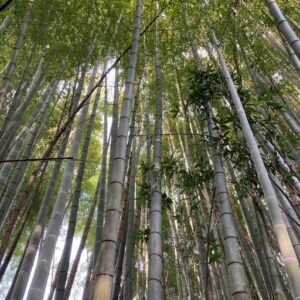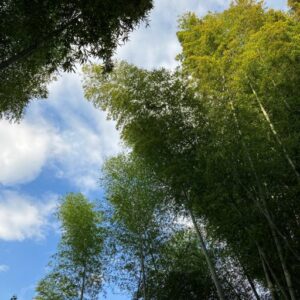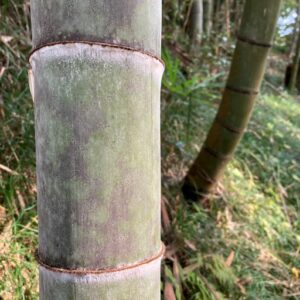Bamboo can be made into a splendid bonsai. It has a unique appeal as bonsai, and fresh green leaves with good surface roots make it a great bonsai material.
Can Bamboo be a bonsai?
Can bamboo be a bonsai?

Bamboo can be made into a splendid bonsai. In particular, its summer view is exceptional. Bamboo bonsai has a unique appeal that cannot be experienced with other bonsai trees because it looks like both grass and a tree.
On the other hand, it is difficult to make a “good” bonsai out of bamboo. It is technically a grass and has a short lifespan compared to other bonsai trees such as pines and maples. This is why there are not many bamboo bonsai growers.
What is bamboo

Bamboos are evergreen plants growing mainly in Asian regions but some species are native to Northern Australia, India and central Africa as well. Scientifically speaking, bamboo is grass and not a tree although some grow to 65 feet (20 meters) in height. Most bamboo species grow in tropical and temperate climates.
Bamboo spreads through the roots. It grows widely underground and sends up new shoots to break through the surface.
Though it can reproduce itself from the roots, average bamboo lives up to 10 to 20 years. This is considerably shorter than other bonsai species like pine, spruce and Japanese maples which can live for a few hundred years if they are properly taken care of.
If you are interested in the lifespan of bonsai trees, the following article may be helpful.
What makes bamboo a good bonsai

As I said earlier in this post, bamboo can be a splendid bonsai. There are a lot of characteristics that make bamboo a good bonsai.
- Bamboo bonsai can have good surface roots because its root system is dense and long, with lots of nodes, which grows enough to fill a pot.
- Stems are slender, growing straight upwards. Branches come out alternately from the nodes, where fine branches often come out.
- Leaves are evergreen and fresh green in color, harmonizing well with the stems and branches.
- Many species of bamboo are fit for bonsai.
- Bamboo can strongly reproduce itself. It grows really fast; in fact, it is one of the fastest-growing plants in the world. It is strong and rarely weakens after repotting and tolerates heavy pruning well.
- Making bamboo bonsai is much faster than making bonsai with other bonsai species. It takes only 2 to 3 years.
- New green in summer is perfect for viewing.
- Evergreens, including bamboo, are symbols of fortune, prosperity and longevity. Having those bonsai trees can bring you luck if you believe in it.
I wrote an article about whether having a bonsai tree (including bamboo) good luck. If you are interested, please check the link below.
Disadvantages of bamboo as a bonsai

There are also disadvantages to using bamboo as bonsai material.
- It is difficult to make a bonsai out of bamboo because it is actually grass.
- Because of its short lifespan, it cannot be grown over a long period of time.
- Bamboo grows together as a forest in nature, so bamboo bonsai should be a forest bonsai. As they are connected by underground root systems, it is difficult to place them where you want them in the pot.
- One or more bamboos die off every year from bamboo forest bonsai because bamboo does not live long. But replacing them with new ones might be difficult because other bamboos are connected by root systems and you cannot place new ones where you want. Also, existing bamboo will lose its power and may die when you add new, vigorous-growing bamboo.
- Many bamboos prefer warm climates. Bamboo bonsai is not for colder regions.
- Bamboo often dies off while growing as a bonsai, though it can reproduce itself easily.
- Bamboo stays the same throughout the year and lacks change.



